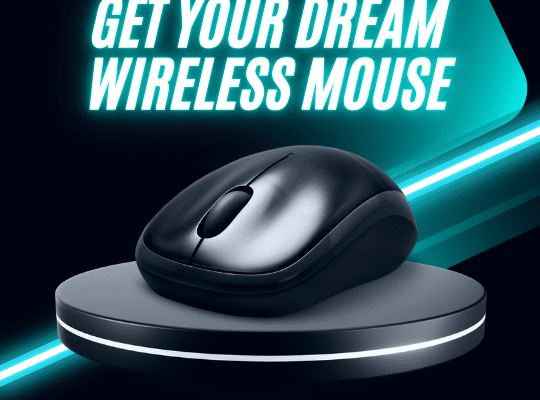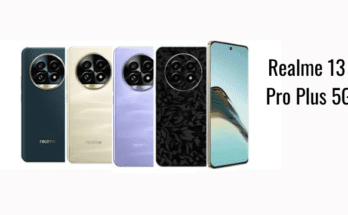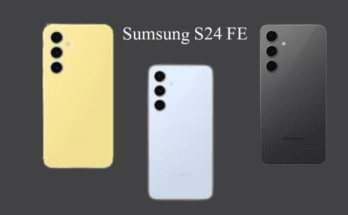Introduction:
In the dynamic world of technology, where advancements occur at a rapid pace, the wireless mouse stands as a testament to human ingenuity and the relentless pursuit of convenience and efficiency. Initially seen as a mere accessory, the wireless mouse has evolved into a critical tool for both casual users and professionals, redefining the way we interact with our digital environments.
A Brief Historical Perspective
The journey of the wireless mouse began in the early 1990s when it was first introduced as an alternative to the traditional wired mouse. The initial models were bulky and had limited battery life, which hindered their widespread adoption. However, as technology progressed, significant improvements in design, functionality, and connectivity paved the way for the modern wireless mouse.
Technological Advancements
1. Connectivity: One of the most significant advancements in wireless mice is the enhancement in connectivity options. Early models relied on infrared technology, which required a clear line of sight between the mouse and receiver. Current remote mice use radio recurrence (RF) innovation and Bluetooth, offering consistent network and more prominent reach .This allows users to operate their devices without the constraints of wires, providing a clutter-free workspace.
2. Battery Life and Charging: Battery life has been a critical concern for wireless mouse users. Early iterations required frequent battery replacements, leading to inconvenience and additional costs. Contemporary wireless mice, however, boast impressive battery longevity, with some models offering up to a year of usage on a single charge. Additionally, the introduction of rechargeable batteries and quick-charging capabilities has further enhanced user experience, ensuring that the mouse is always ready for use.
3. Ergonomics and Design: The design of wireless mice has seen substantial improvements, with a strong focus on ergonomics. Manufacturers now offer a variety of shapes and sizes to accommodate different hand sizes and grip styles, reducing strain and improving comfort during prolonged use. Ergonomically designed wireless mice help prevent repetitive strain injuries, making them ideal for professional environments where long hours of computer use are common.
4. Precision and Performance: The performance of wireless mice has seen a significant boost with the advent of advanced optical and laser sensors. These sensors provide higher DPI (dots per inch) settings, allowing for precise cursor control and smooth tracking on various surfaces. This is particularly beneficial for graphic designers, gamers, and professionals who require pinpoint accuracy in their work.
5. Customization and Programmability: Modern wireless mice often come with customizable buttons and software that allow users to tailor the mouse to their specific needs. This feature is especially valuable for gamers and professionals who rely on shortcuts and macros to enhance productivity and streamline tasks. The ability to program buttons for specific functions provides a level of efficiency that is unmatched by traditional mice.
Environmental Considerations
As sustainability becomes a more pressing concern, manufacturers are making strides to produce eco-friendly wireless mice. Many companies now use recycled materials in their products and packaging, and efforts are being made to reduce the environmental impact of production processes. Additionally, the shift towards rechargeable batteries not only benefits users but also contributes to a reduction in battery waste.
Conclusion
The evolution of the wireless mouse exemplifies how continuous innovation can transform a simple tool into an essential device that enhances productivity and user experience. From improved connectivity and battery life to ergonomic designs and customizable features, the modern wireless mouse is a marvel of technological advancement. As we look to the future, it is clear that the wireless mouse will continue to evolve, adapting to the ever-changing needs of users and maintaining its place as a vital component in the world of computing.
FAQs
Question No 1
Is there an inconvenience to utilizing a remote mouse?
Answer
Yes, potential disadvantages include battery dependence, signal interference, and latency issues compared to wired mice.
Question No 2
What is the potential problem of wireless mouse?
Answer
Potential problems with wireless mice include:
1. Battery Life: Requires regular charging or battery replacement.
2. Interference: Can experience signal interference affecting performance.
3. Latency: Slight delay in response compared to wired mice.
4. Connection Issues: May disconnect or require re-pairing.
5. Cost: Typically more expensive than wired alternatives.
Question No 3
Why do people prefer wireless mouse?
Answer
People prefer wireless mice because they offer freedom of movement without tangling wires, they are convenient for use with laptops and in cluttered spaces, and they generally provide comparable performance to wired mice for most users.
Question No 4
Which is better wireless or wired mouse?
Answer
It depends on your specific needs:
Wireless Mouse: Offers convenience and mobility but requires battery management and can have latency issues.
Wired Mouse: Generally more reliable with no latency concerns, but less convenient due to the cable.
Choose based on your preference for mobility versus reliability.
Question No 5
How long will a wireless mouse last?
Answer
A wireless mouse typically lasts between 1 to 3 years on average, depending on usage patterns and battery type.
Question No 6
Which mouse is better Bluetooth or wireless?
Answer
Bluetooth mice are a type of wireless mouse. Bluetooth uses a standard protocol for connectivity, whereas “wireless” can refer to various technologies like RF (radio frequency). Bluetooth mice are typically better for devices that support Bluetooth connectivity, while other wireless mice may use USB dongles for connectivity. The choice depends on your device compatibility and preference for connectivity method.
Question No 7
Does distance affect wireless mouse?
Answer
Yes, distance can affect a wireless mouse. The farther you are from the receiver, the weaker the signal may become, potentially leading to issues like lag or loss of responsiveness.
Question No 8
What makes a wireless mouse stop working?
Answer
A wireless mouse can stop working due to low battery, interference from other wireless devices, signal interference, or a faulty connection.
Question No 9
What is the weakness of wireless mouse?
Answer
The main weaknesses of wireless mice are potential for latency (delay in response), reliance on battery power (needing frequent recharging or replacement), and susceptibility to interference from other wireless devices.
Question No 10
Why mouse is better than touchpad?
Answer
Using a mouse can be better than a touchpad because:
1. Precision: A mouse offers more precise control, especially for tasks requiring fine movements like design work or gaming.
2. Comfort: Ergonomically designed mice are more comfortable for prolonged use compared to touchpads.
3. Speed: Navigating quickly through large documents or spreadsheets is often faster with a mouse.
4. Customizability: Many mice allow for customization of buttons and sensitivity to suit individual preferences and tasks.



